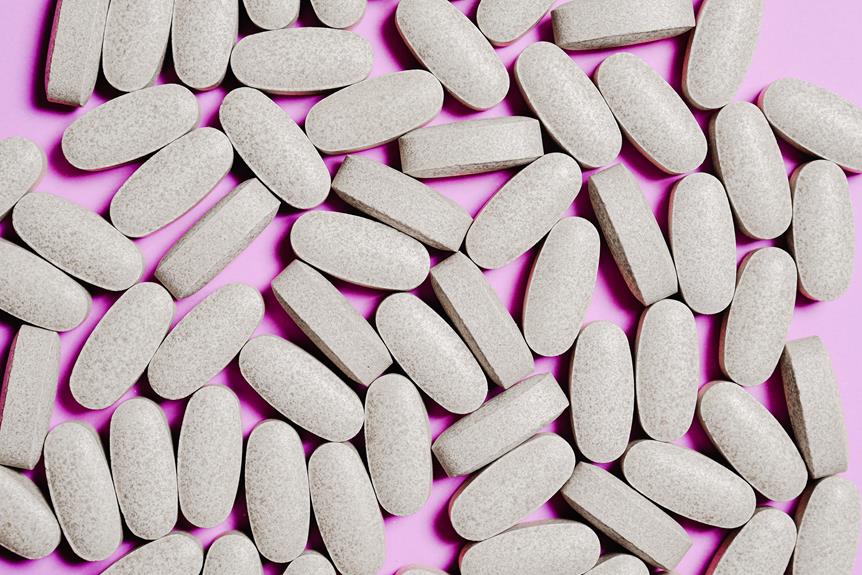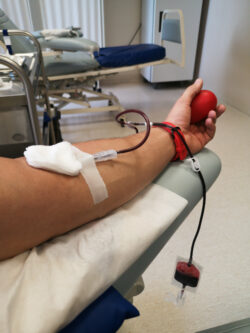Farxiga – Dosage, Interactions, FDA Warnings & Studies
Navigating the labyrinth of Type 2 diabetes treatment can be daunting. Farxiga, an FDA-approved medication, is a beacon of hope for many, yet it carries potential risks. This article provides a comprehensive analysis of Farxiga, examining its dosage, interactions, and FDA warnings. Through a deep dive into clinical studies, we illuminate the benefits and risks, equipping you with the knowledge to make informed decisions about your health.

Key Takeaways
- Farxiga is an oral medication used to treat Type 2 diabetes.
- It belongs to a group of drugs called sodium-glucose cotransporter 2 (SGLT2) inhibitors.
- Studies have linked Farxiga to serious side effects, including kidney problems and bladder cancer.
- The FDA has released safety communications about Farxiga and other SGLT2 inhibitors, warning about potential fatal conditions.
Understanding Farxiga and Its Use
A considerable number of individuals with Type 2 diabetes have turned to Farxiga, a sodium-glucose cotransporter 2 inhibitor, as a preferred method of maintaining their blood sugar levels. Beyond glycemic control, Farxiga's effectiveness in weight loss has gained significant attention. The drug aids in the expulsion of excess sugar from the body through urination, which can contribute to weight reduction. Furthermore, Farxiga's impact on cardiovascular health is noteworthy. Studies have demonstrated its potential to reduce the risk of heart failure and cardiovascular death in patients with Type 2 diabetes. As such, Farxiga not only helps manage blood sugar levels but also offers additional health benefits including weight loss and improved cardiovascular health.
Detailed Description of Farxiga Dosage
Prescribed primarily for the management of Type 2 diabetes, Farxiga's dosage is typically tailored to the individual patient's needs, taking into account various factors such as the severity of the condition, the patient's overall health, and their response to therapy. The recommended dosage of Farxiga is generally initiated at 5 mg once daily, and may be increased to a maximum of 10 mg daily, as directed by a healthcare provider. It is important to note, however, that this medication is not without risks. The potential side effects of Farxiga can range from minor issues such as back pain or cold symptoms, to more serious complications like bladder infections and kidney problems. Therefore, regular doctor visits and monitoring are crucial while on this medication.
Potential Interactions of Farxiga With Other Drugs
While Farxiga is highly effective in managing Type 2 diabetes, it is imperative to understand that it can potentially interact with certain other medications, thereby altering its efficacy and safety. Some of these potential drug interactions may include, but are not limited to, insulin or insulin secretagogues, which can increase the risk of hypoglycemia. Diuretics, as well as drugs that interfere with the renin-angiotensin-aldosterone system, may also interact, possibly leading to impaired renal function. Furthermore, the co-administration of Farxiga with drugs that induce or inhibit CYP3A4/5 could affect dapagliflozin's concentration. It is crucial for healthcare providers to be aware of these interactions to avoid any safety concerns and ensure optimal treatment outcomes for their patients.
Comprehensive List of FDA Warnings for Farxiga
Over the years, the Food and Drug Administration (FDA) has issued multiple warnings related to Farxiga, and this section will provide an exhaustive list of these alerts. The FDA warnings on Farxiga primarily revolve around serious side effects such as kidney injury, low blood pressure, bladder cancer, and the fatal diabetic ketoacidosis. The FDA also warned that Farxiga could lead to severe urinary tract infections, resulting in life-threatening blood infections. Furthermore, the FDA has cautioned about potential drug interactions with Farxiga, emphasizing the importance of patients disclosing all current medications to their healthcare providers. It is crucial for patients and healthcare professionals to be aware of these warnings to manage Farxiga treatment effectively and safely.
Analyzing Clinical Studies Related to Farxiga
Since the approval of Farxiga by the FDA in 2014, numerous clinical studies have been conducted to evaluate its efficacy and safety in treating Type 2 diabetes. These clinical trials have provided valuable insight into both the benefits and potential risks associated with this medication. Notably, some studies have highlighted possible drug interactions that could impact the effectiveness of Farxiga or potentially lead to adverse effects. For instance, it has been noted that Farxiga may interact with certain diuretics, increasing the risk of dehydration. Additionally, concerns have been raised regarding the use of Farxiga alongside insulin or insulin secretagogues due to an increased risk of hypoglycemia. Further research and ongoing monitoring of data from clinical trials are crucial to fully understand and manage these potential interactions.
The Mechanism of Farxiga in Controlling Blood Sugar Levels
Farxiga, a revolutionary medication for Type 2 diabetes, employs a dual mechanism to control blood sugar levels, both by inhibiting a protein in the kidneys responsible for reabsorbing sugar and by promoting the excretion of excess sugar through urine. This method of action aids in maintaining a stable glucose level, thereby contributing to the long term effects of Farxiga on blood sugar control. Furthermore, research studies have highlighted Farxiga's impact on cardiovascular health. The reduction of hyperglycemia, facilitated by Farxiga, decreases the risk of cardiovascular complications, which are prevalent in Type 2 diabetes patients. Thus, Farxiga not only regulates blood sugar levels effectively but also offers potential benefits in terms of heart health, substantiating its role as a vital medication for Type 2 diabetes management.
Adverse Reactions and Side Effects of Farxiga
Despite its effectiveness in controlling blood sugar levels, Farxiga has been associated with a range of adverse reactions and side effects that patients should be aware of. Some of these reactions are immediate while others are potential complications that may develop over time. Common side effects include urinary tract infections, increased urination, and genital yeast infections. More severe reactions include kidney problems, low blood pressure, and a rare but serious condition called ketoacidosis. The long term effects of Farxiga use are also a concern, with some studies suggesting a possible link to bladder cancer. It's crucial that patients using Farxiga monitor their health closely and report any unusual symptoms to their healthcare provider immediately.
Overview of Litigation and Lawsuits Against Farxiga’s Manufacturers
In the years following the FDA approval of Farxiga in 2014, its manufacturers, AstraZeneca and Bristol-Myers Squibb, have faced numerous lawsuits from patients who have suffered serious side effects from the medication. These lawsuits highlight the potential legal action that patients can take to seek compensation for their injuries. The lawsuits generally allege that the manufacturers failed to adequately warn about the risks of Farxiga, thereby breaching their manufacturer responsibility. Plaintiffs claim that if they had been properly informed about the potential risks, they might have chosen a different treatment. The ongoing litigation emphasizes the importance of pharmaceutical companies providing full and accurate information about their products to ensure patient safety and uphold their duty of care.
An In-depth Look at Farxiga’s Impact on Kidney Function
With a focus on the role of Farxiga in diabetes management, understanding its effects on kidney function is critical, and particular attention should be given to the medication's influence on the renal system, which plays a pivotal role in maintaining blood glucose balance. Farxiga, by inhibiting SGLT2, forces the kidneys to excrete excess sugar, a mechanism that has a direct impact on kidney function. However, an adverse reaction associated with Farxiga is its potential to cause kidney damage, a serious concern for diabetic patients. Additionally, FDA warnings highlight an increased risk of bladder cancer, a potentially life-threatening condition. Thus, while Farxiga proves effective in managing blood sugar levels, its impact on kidney function and association with bladder cancer necessitate further examination.
Farxiga’s Association With Bladder Cancer: a Closer Look
The complexity of Farxiga's therapeutic benefits is underscored by its potential risk factors, and a significant concern among these is its association with bladder cancer. While Farxiga has proven efficacy in the management of Type 2 diabetes, its long term effects have raised questions about bladder cancer risks. Some observational studies have shown an increased incidence of bladder cancer among Farxiga users, while other research has been inconclusive. It is essential to note that the risk may be influenced by multiple factors, including dosage, duration of use, and individual patient characteristics. Thus, while the medication offers considerable benefits, a comprehensive understanding of its potential association with bladder cancer is critical for informed decision-making in patient treatment protocols.
Exploring the Role of SGLT2 Inhibitors in Farxiga’s Functioning
Understanding how SGLT2 inhibitors, such as Farxiga, function is essential to appreciate their role in the treatment of Type 2 diabetes. These inhibitors work by blocking the reabsorption of glucose in the kidneys, thus promoting the elimination of excess sugar through urine. This unique action not only helps regulate blood sugar levels, but also offers potential benefits such as weight loss and blood pressure control. Importantly, the function of Farxiga differs from other diabetes medications, as it operates independently of insulin mechanisms. However, while SGLT2 inhibitors present a novel approach to diabetes management, their use is not without risks. Therefore, patients and healthcare providers must balance these potential benefits with the associated risks to make informed treatment decisions.
Farxiga’s Place in the Treatment of Type 2 Diabetes
Although Farxiga has been associated with serious side effects, it remains a significant player in the management and treatment of Type 2 diabetes due to its unique mechanism of action. By inhibiting the reabsorption of glucose in the kidneys, Farxiga effectively lowers blood sugar levels. However, the concern regarding Farxiga's long term effects, including potential kidney injury and bladder cancer, has prompted many within the medical community to explore potential alternatives to Farxiga. While these alternatives may work differently, the goal remains the same: to effectively manage and control blood sugar levels in Type 2 diabetes patients. The place of Farxiga in treatment plans, therefore, often becomes a balance of its benefits against its potential risks.
Comparing Farxiga With Other Type 2 Diabetes Medications
Both Farxiga and several other type 2 diabetes medications function to control blood sugar levels, yet they utilize distinct mechanisms of action and may present different side effects for patients. When comparing Farxiga with Metformin, both are effective in controlling diabetes, but they work in different ways. Metformin decreases glucose production in the liver and absorption in the intestines, while Farxiga reduces glucose reabsorption in the kidneys, leading to its excretion in urine.
One advantage of Farxiga is its cardiovascular benefits. Studies have shown that Farxiga can reduce hospitalization for heart failure in patients with type 2 diabetes. Meanwhile, Metformin doesn't have a direct effect on heart disease, although it can indirectly benefit cardiovascular health by controlling blood sugar and weight.
Evaluating the Efficacy of Farxiga in Lowering Blood Sugar Levels
In evaluating the efficacy of Farxiga in the regulation of blood glucose levels, it is critical to consider the results from clinical trials and real-world data, which provide insights into its performance in patients with Type 2 diabetes. Multiple clinical trials have demonstrated that Farxiga effectively lowers blood sugar levels by preventing the kidneys from reabsorbing glucose. Furthermore, long term effects of Farxiga usage have been studied, indicating a sustained glucose-lowering effect. However, some studies have also raised concerns about potential side effects, including kidney problems. Therefore, while Farxiga has proven to be effective in managing blood glucose levels, its long term effects require careful monitoring, especially in patients with existing kidney conditions.
Patient Experiences and Testimonials About Farxiga
We have gathered various patient testimonials and personal experiences with Farxiga, and these accounts provide valuable insights into the drug's effectiveness and potential side effects. Many individuals have noted improved blood sugar control, an essential aspect of managing Type 2 diabetes, contributing to high patient satisfaction. However, some patients have reported encountering side effects such as urinary tract infections and symptoms of low blood pressure. When assessing the long term effects, some patients have expressed concerns about potential kidney damage and bladder cancer, a risk highlighted in FDA warnings. While Farxiga can be an effective treatment for some, these patient experiences underline the importance of discussing potential risks and benefits with a healthcare provider.
Frequently Asked Questions
Can Farxiga Be Used to Treat Type 1 Diabetes?
Farxiga, primarily used for Type 2 diabetes, has also shown some efficacy in treating Type 1 diabetes in combination with insulin. However, its use in Type 1 diabetes is off-label and not FDA-approved. It is crucial to note that Farxiga can lead to side effects such as dehydration, urinary tract infections, and potential kidney problems. Therefore, medical consultation is vital before initiating its use for Type 1 diabetes.
Are There Any Dietary Restrictions or Lifestyle Changes Recommended When Taking Farxiga?
When taking Farxiga, certain lifestyle modifications are recommended. Regular exercise is crucial, however, considerations should be made for potential hypoglycemia during prolonged physical activities. A balanced diet is advised, with careful monitoring of carbohydrate intake. Alcohol consumption should be moderated as it can increase the risk of hypoglycemia. Always consult with your healthcare provider for personal recommendations based on your health status and medication regimen. These steps can significantly aid in managing Type 2 diabetes effectively.
Is Farxiga Safe for Pregnant or Breastfeeding Women?
The safety of Farxiga for pregnant or breastfeeding women is not definitively established. Some studies suggest potential risks of adverse pregnancy outcomes. While Farxiga's efficacy in controlling blood glucose levels is proven, its use during pregnancy may pose complications. Breastfeeding women should also exercise caution as it's unknown if dapagliflozin, Farxiga's active ingredient, passes into breast milk. Always consult your healthcare provider before starting or continuing Farxiga during pregnancy or breastfeeding.
How Does Farxiga Impact Weight Loss or Weight Gain in Patients?
Farxiga, as an SGLT2 inhibitor, influences metabolic processes and can lead to weight loss in patients. This is due to its mechanism of action, which facilitates glucose excretion through urine, indirectly reducing calorie absorption. However, it's essential to consider Farxiga's side effects, including dehydration risk due to increased urination, which can influence weight. Always consult a healthcare provider for personalized advice regarding weight changes associated with Farxiga.
Can Farxiga Be Used in Conjunction With Insulin Therapy?
Yes, Farxiga can be used in conjunction with insulin therapy. This combination is beneficial in managing Type 2 diabetes, particularly for patients with insulin resistance. Farxiga works by eliminating excess glucose through urine, while insulin therapy helps regulate the body's use of glucose. This drug synergy can potentially lead to more effective blood sugar control. However, dosage adjustments may be necessary. Clinical monitoring is recommended to manage potential side effects.
Conclusion
In the final analysis, Farxiga serves as a double-edged sword in the battle against Type 2 diabetes. While it undoubtedly aids in reducing blood sugar levels, the specter of serious side effects like kidney problems and bladder cancer casts a long shadow. The decision to utilize Farxiga should therefore be made with utmost care, taking into consideration all potential risks and benefits. Diligent monitoring and consistent communication with healthcare professionals remain paramount in this journey.

This post has been generated by AI and was not reviewed by editors. This is Not legal advice. Please consult with an attorney.




